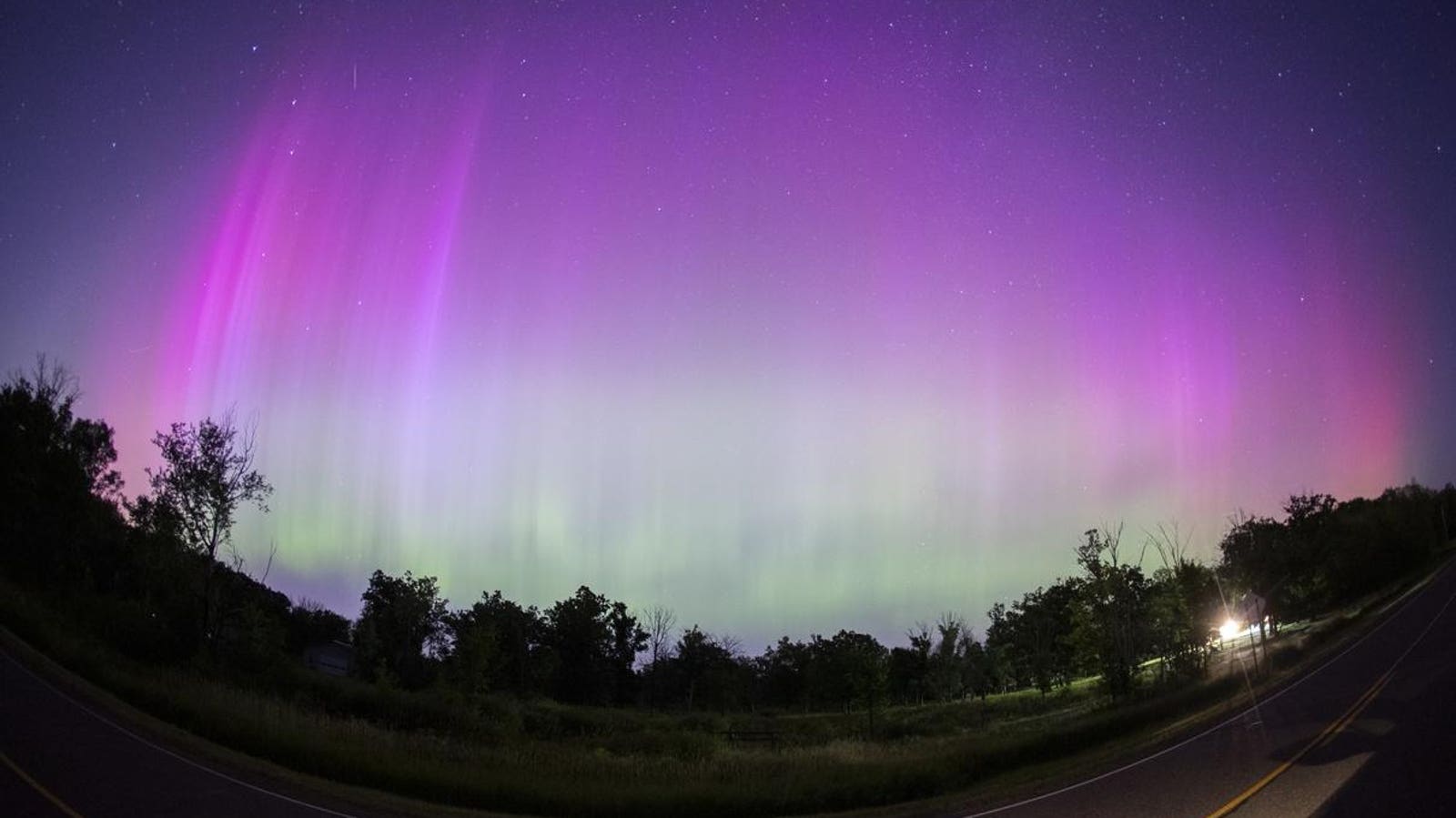Topline
Northern residents of seven continental states may be able to view the northern lights Friday night despite no significant predictions for geomagnetic storms, according to the latest National Oceanic and Atmospheric Administration forecast.
The northern lights in Central Minnesota on Aug. 11, 2024.
Anadolu via Getty Images
Key Facts
NOAA forecast a Kp index of two on a scale of nine for Friday, suggesting the northern lights might be more visible farther from the poles and into the northern United States.
Friday will give Americans the best chance to see the lights of the next three days, with the likelihood of geomagnetic activity and storms dropping daily through Sunday.
Get Forbes Breaking News Text Alerts: We’re launching text message alerts so you’ll always know the biggest stories shaping the day’s headlines. Text “Alerts” to (201) 335-0739 or sign up here: joinsubtext.com/forbes.
Where Will The Northern Lights Be Visible?
The northern lights will have the best chance of being seen throughout Canada and Alaska but NOAA’s predicted “view line” dips into Washington, Idaho, Montana, North Dakota, Minnesota, Wisconsin, and upper Michigan. (See map below.)
What’s The Best Way To See The Northern Lights?
Usually from a high vantage point, away from light pollution, while facing north sometime between 10 p.m. and 2 a.m. local time, according to NOAA. The lights will be most visible this weekend at around 3 a.m. Saturday, according to NOAA’s kp index forecast.
What’s The Best Way To Photograph The Northern Lights?
Flash on smartphones should be turned off and night mode enabled, NOAA suggests, and using a tripod can help to stabilize the image. With a separate camera, photography experts told National Geographic it’s best to use a wide-angle lens, an aperture or F-stop of four or less and a focus set to the furthest possible setting.
Key Background
Also known as the Aurora Borealis, the Northern Lights appear as a colorful phenomena in the night sky when electrically charged particles from the sun collide with the Earth’s atmosphere. The Northern Lights are most visible near the Arctic Circle because Earth’s magnetic field redirects the particles toward the poles, but they can stretch far beyond their usual range during times of high solar activity. The lights’ bright colors are determined by the chemical composition of the atmosphere.
